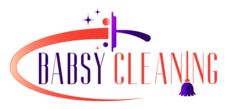How to remove sticker residue

When cleaning windows, it's important to know how to remove sticker residue. This is a valuable cleaning hacks, whether it's scraping the scattered pieces of rubbish on a window with knives, scissors, or an old credit card. Even cleaning enthusiasts can find the scattered pieces of rubbish on surfaces to be an eyesore and a nuisance. There are various methods available to remove sticker residue, including:
- nail varnish remover
- hand sanitizer
- WD40
- mayonnaise
- washing up liquid
- or lighter fluid.
Whatever you think is the best and you want to share on social media. Knowing how to remove it without damaging the surface is important, whether it's from a price tag, bumper sticker, or old adhesive label. Read on to learn, easy tips and tricks for removing sticker residue using cleaning hacks from cleaning professionals.
Let's move on from the introduction of the subject and discuss the topic of the matter. What is the definition of sticker residue? It is gunk or some scattered pieces of rubbish on surfaces like mirrors, glass, windows, etc. Some of us will experience this annoying matter at some point in life. It is more difficult to remove is because it is a concentrated adhesive source. The adhesive properties of these substances are attributed to the fact that they are primarily made up of chemicals that are discarded and left to accumulate.
Glue, tape, labels, and other adhesives are household items that can leave sticky residue that can be difficult to remove. The presence of natural affluences approximating tree sap, honey, and other pollen can result in sticky residue. Due to its strong adhesive properties, the substance is difficult to remove the surface it has been applied to.
Follow the step by step to remove sticky residue with heat and a solvent.

- The first step is to choose a solvent that will be effective in breaking down the residue. Some common solvents you can use for this purpose are acetone, rubbing alcohol, and turpentine.
- After choosing a solvent, the next step is to apply it to the area that needs it. Apply the solvent with a generous amount and let it sit for a few minutes. This will allow the solvent to break down the residue.
- The next step is to provide heat to the area. A heat gun, hair dryer, or a hot cloth are all options for doing this. Place the heat directly onto the residue and heat the area gently until it melts or softens.
- After the residue softens, the next step is to remove it with a cloth or a plastic scraper. Scrape away the residue with a cloth or scraper with care. Don't put too much pressure on the cloth or scraper as this could cause damage to the surface.
- After removing the residue, you should use a cloth or sponge to clean the surface. To eliminate any remaining residue, use either a mild cleaning solution or soapy water.
- After cleaning the surface, it is important to apply a protective layer to the area, such as wax or sealant. This will help to prevent more residue from attaching to the area in the future.
Removal of sticky residue from surfaces can help you using heat and a solvent with these six steps. If you're dealing with a tougher residue, you might want to try using homemade glue remover or cooking oil to help break it down. The right combination of heat and solvent can make sticky residue disappear!
Lists how to remove sticky residue with nail varnish remover, hand sanitizer or WD40
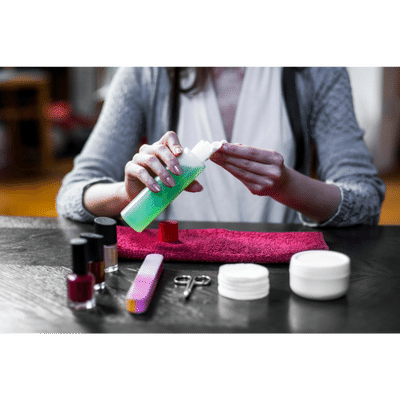
What is it to deal with the sticky, pesky residue left behind after removing a label or price tag? It is a source of frustration! But there's no reason to panic! Follow these easy-to-follow steps to get rid of that sticky residue with a few simple household items.
- Nail polish remover: Soak a cotton ball in nail polish remover and rub it over the sticky residue. The nail polish remover's acetone will dissolve the adhesive, making it easy to remove.
- Hand sanitizer : Another great option for removing sticky residue is using hand sanitizer. The alcohol in the hand sanitizer will break down the adhesive, making it easier to remove.
- WD-40: This is a useful tool to have in the house for many purposes, including removing sticky residue! Apply a small amount of WD-40 to the residue and wipe it away with a clean cloth.
- Vinegar: It is a versatile cleaning solution that you can use to remove sticky residue. Apply some vinegar to the residue using a clean cloth and wipe it away.
- Baking soda: This is another excellent all-purpose cleaner that can be utilized to remove sticky residue. Create a paste with baking soda and water and apply it to the residue. Allow it to sit for a few minutes before removing it.
- Lemon juice: A natural cleaning solution that can help remove sticky residue. Apply lemon juice to the residue with a clean cloth and wipe it away with a clean cloth.
- Rubbing alcohol: Another effective way to remove sticky residue is by rubbing alcohol. With a clean cloth, apply rubbing alcohol to the residue and wipe it away.
Mayonnaise
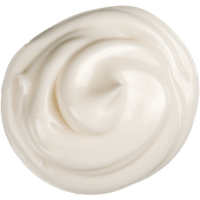
Mayonnaise is a natural way to remove sticky residue from surfaces! The oil and vinegar in mayonnaise are effective in breaking down adhesive residue. Spread a generous amount of mayonnaise over the affected area, let it sit for 10-20 minutes, and then wipe the residue off with a soft cloth. Sticking labels, decals, and other tough adhesives are a breeze with this process.
Washing Up Liquid
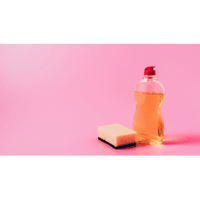
One of the most effective methods for removing sticky residue from surfaces and objects is to use washing up liquid. Make a solution of warm water and a few drops of washing up liquid and mix it well. Then, use a soft cloth to dab onto the affected area. Allow the solution to sit for a few minutes, then remove the residue. This method is excellent for removing label residue and other tough adhesives.
Lighter fluid
 Lighter fluid: stain solutions
Lighter fluid: stain solutions
Would you like to know how to remove sticker residue with lighter fluid? Here we have it for you! To do it, all you need to do is apply some lighter fluid to the affected area and let it sit for a few minutes. Wipe off the residue using a soft cloth. It's important to ventilate the area before and after using lighter fluid, as the fumes can pose a danger.
Mayonnaise vs. Washing Up Liquid: Which is Better for Sticky Residue?
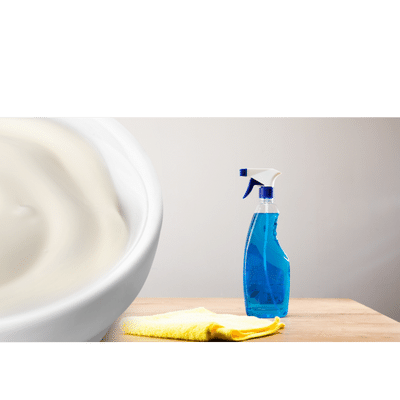
When it comes to removing sticky residue, many people often question which is better, mayonnaise or washing up liquid? The type of residue you're looking to remove is the factor that determines the outcome. For easier adhesives, such as labels and decals, mayonnaise is the best choice, while washing up liquid is ideal for tougher residues, like sticker glue. It's a matter of preference, as both works great.
How to remove adhesive stubborn sticker on metal surface within 15 minutes with distilled white vinegar and dish soap? If you're struggling with how to remove a sticky residue from a metal surface, you're not alone. This simple task can be quite challenging, but we're here to help. The good news is that there is a way to remove a sticky residue from a metal surface with distilled white vinegar and dish soap.
All you need to do is mix equal parts of each, apply it to the surface, and let it sit for 15 minutes. Then, use a cloth or scrub brush to remove the residue. This method is safe for most surfaces, including wood. However, it's always a clever idea to test a small area first to be sure. So, the next time you're struggling with a sticky residue, give this method a try. It just might be the answer you're looking for.
Removing a sticky residue from peanut butter
We all experience it. Getting ready to put a new piece of art on the refrigerator or put up a new decoration, you realize there's a leftover sticker on the surface. The sticker won't come off, which is even worse! What do you do?
Peanut butter is an option for removing the sticker. These steps are simple to follow:
- Apply peanut butter to the sticker.
- Please wait for a few minutes.
- Wipe off the peanut butter and sticker using a sponge or cloth.
- Wipe off any peanut butter that remains with a wet cloth.
This method is successful, but it's not always effective. Attempting a different approach may be necessary if the sticker is extremely stubborn.
Ensure there is no damage by testing it on a non-visible area of the surface is one best way on how to remove sticker residue.
These tips and tricks can help you achieve the most success while performing this task.
- Start with the solution that is least dangerous (such as mayonnaise, washing up liquid, and lighter fluid).
- To ensure no damage, test the solution on a small, inconspicuous area of the surface.
- Before and after using a solvent, make sure to ventilate the area and use a soft cloth to wipe away any residue.
Prevention is always more effective than cure, so here are other straightforward methods to prevent sticky residue from accumulating in the first place. Whenever you're baking or cooking with sticky ingredients, it's important to use a silicone mat or baking paper. Make sure to line cardboard boxes with wax paper or waxed cardboard when packing items. To avoid residue build-up, please use the right cleaning products for each surface. If there's still some residue left, it's worth trying to use a commercial sticker remover.
Another related article you may want to read about is how to remove limescale from toilet bowls.
